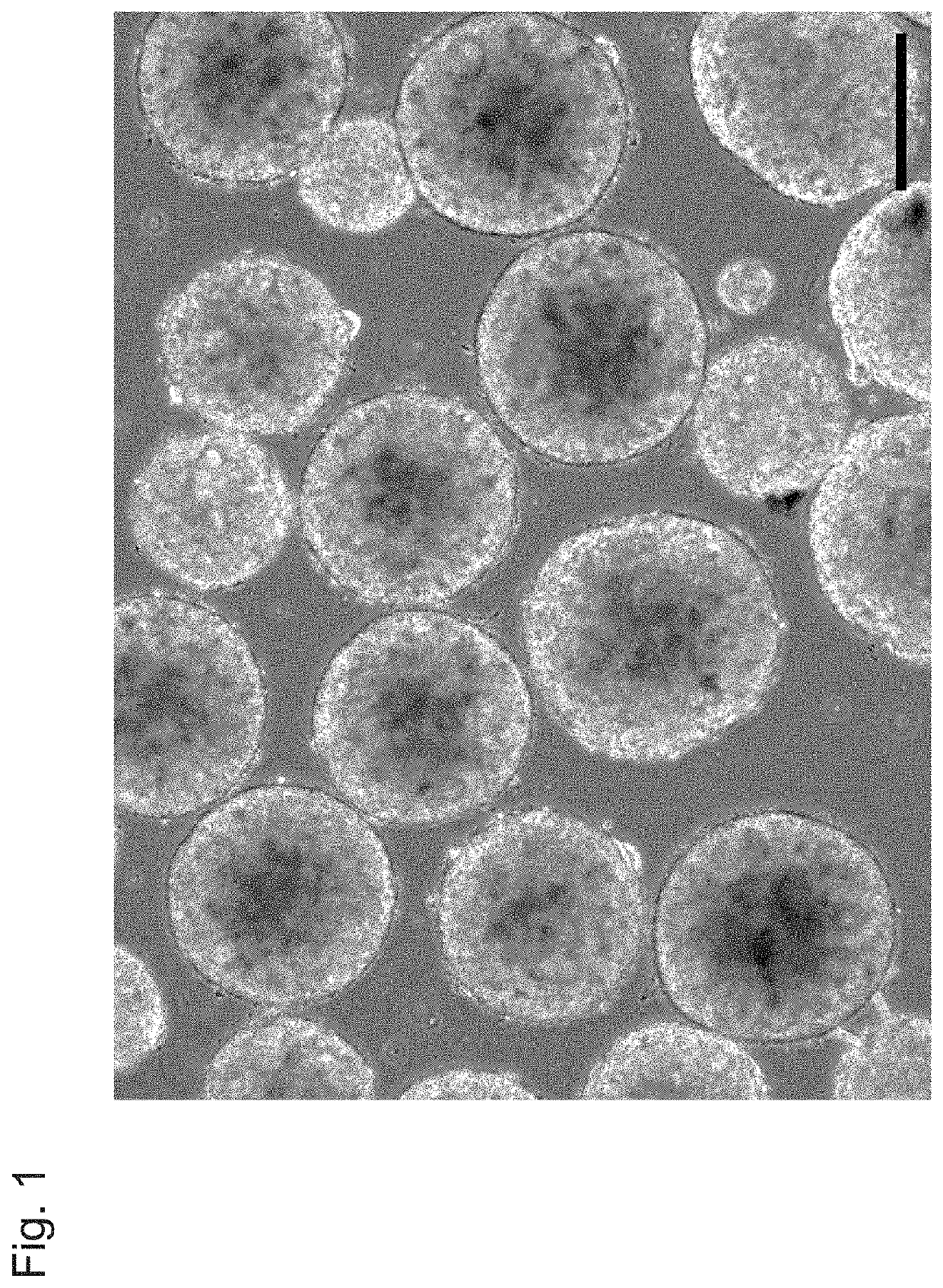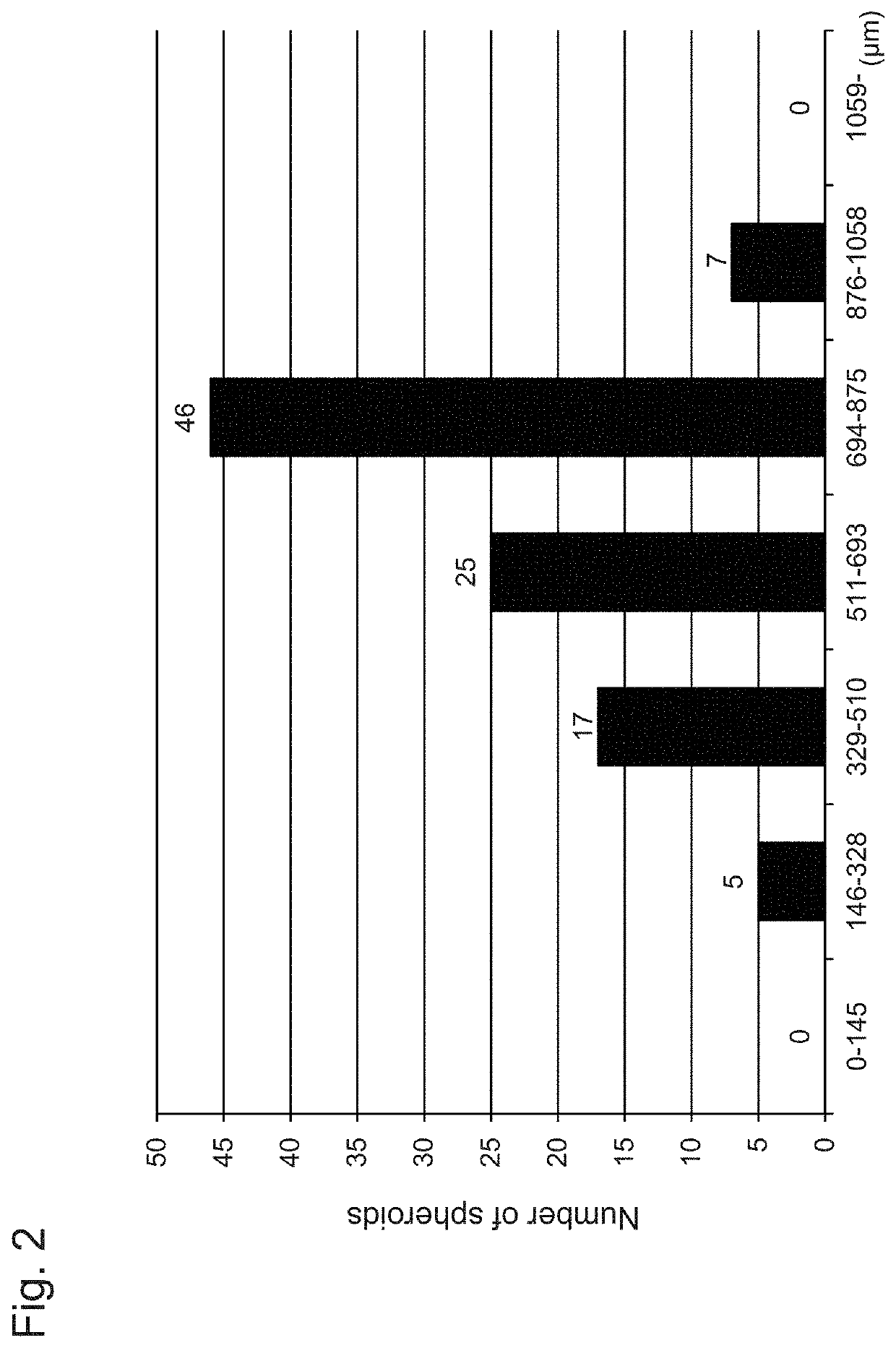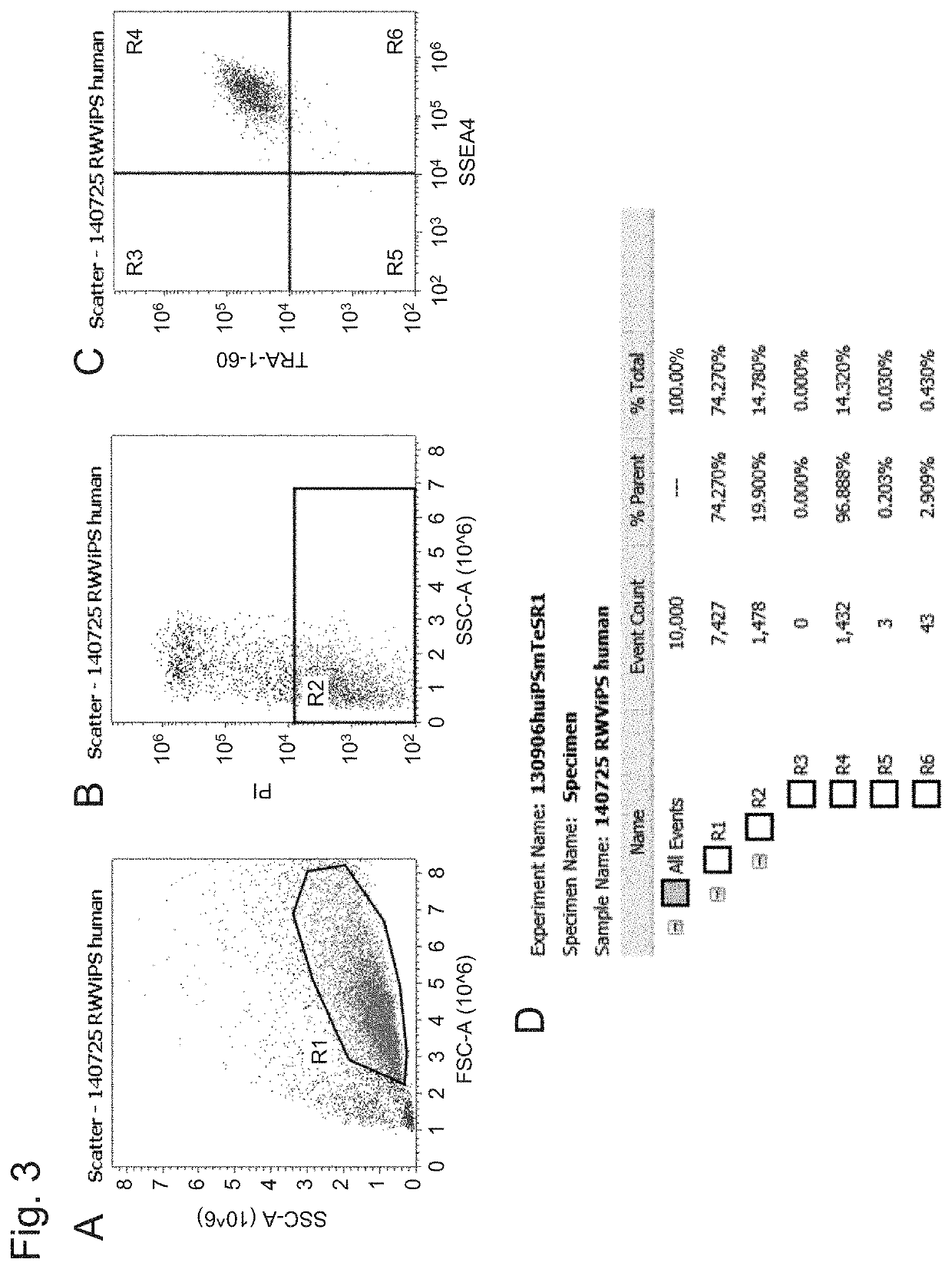Method for culturing pluripotent stem cells
a technology of pluripotent stem cells and culturing methods, which is applied in the field of pluripotent stem cell culturing, can solve the problems of not developing ethical problems, contamination with feeder cells, and the contamination of ips cells as a significant obstacle to the use of ips cells for regenerative medicine, and achieves the effect of efficient proliferation of pluripotent stem cells and higher safety
- Summary
- Abstract
- Description
- Claims
- Application Information
AI Technical Summary
Benefits of technology
Problems solved by technology
Method used
Image
Examples
example 1
[Example 1] Production of Spheroid from Induced Pluripotent Stem Cells (iPS Cells) Through Three-Dimensional Culture with RWV Bioreactor
(1) Construction of Spherical Spheroid
[0060]By using a 6 cm or 10 cm culture dish coated with Matrigel (BD Matrigel™, BD Biosciences), 253G1 cells were cultured in an mTeSR1 (STEMCELL Technologies Inc.), a medium for maintaining human ES / iPS cells while the culture medium was replaced with fresh medium every day, and subcultured by using 5 mM EDTA and 0.5× TrypLE™ Select (Life Technologies).
[0061]To perform three-dimensional culture, 253G1 cells to be seeded were detached into small spheroids (loose cell masses each having a diameter of approximately 50 μm to 200 μm) each consisting of 20 to 40 cells with 5 mM EDTA. The detached 4.9×105 253G cells (small spheroids obtained through chemical disrupting) were seeded in an mTeSR1 medium (10 mL) containing the ROCK (Rho-associated kinase) inhibitor Y27632 (Wako Pure Chemical Industries, Ltd., 10 μM) or a...
example 2
[Example 2] Characterization of iPS Cells Cultured with RWV Bioreactor
[0073]In accordance with the method described in Example 1, the 253G1 cells detached with 5 mM EDTA were seeded in a 10 mL vessel, and rotary-cultured in a 10 μM ROCK inhibitor Y27632-containing mTeSR1 medium with an RWV bioreactor for 3 days. After culturing, spheroids produced were treated with Accutase™ to be dispersed into single cells, and the cells were seeded on a 24-well plate coated with Matrigel, and cultured for 3 days. After culturing, flow cytometry analysis was performed to analyze the expression of pluripotent stem cell markers in the 253G1 cells. Flow cytometry was performed by using the flow cytometer, Attune® Acoustic Focusing Cytometer (Applied Biosystems) with fluorescence-labeled antibodies to stain pluripotent stem cells (anti-SSEA-4 antibody: Alexa Fluor488 anti-human SSEA4 (Cat330441, BioLegend, Inc.); and anti-TRA-1-60 antibody: PE anti-human TRA-1-60 (Cat330609, BioLegend, Inc.)) (test sa...
example 3
[Example 3] Evaluation of Expression of iPS Cell-Marker Genes by Real-Time PCR
[0075]To evaluate the expression levels of iPS cell-marker genes in 253G1 cells cultured with an RWV bioreactor, real-time PCR analysis was performed. The undifferentiation marker genes Nanog, Oct3 / 4 (Pou5fl), and Sox2 were targeted.
[0076]Real-time PCR analysis was performed by using a StepOne™ Real-Time PCR System (Life Technologies, Applied Biosystems) in accordance with the following procedure. First, the 253G1 cells detached with 5 mM EDTA were rotary-cultured in a 10 μM ROCK inhibitor Y27632-containing mTeSR1 medium with an RWV bioreactor for 3 days in the same manner as in Examples 1 and 2, and spheroids produced were collected, and the resulting cell pellets were frozen at −80° C. In parallel, the 253G1 cells detached with 5 mM EDTA were seeded on a culture dish coated with Matrigel, and cultured (two-dimensionally cultured) in an mTeSR1 medium for 3 days, and then centrifuged to collect the cells, ...
PUM
| Property | Measurement | Unit |
|---|---|---|
| size | aaaaa | aaaaa |
| volume | aaaaa | aaaaa |
| diameter | aaaaa | aaaaa |
Abstract
Description
Claims
Application Information
 Login to View More
Login to View More - R&D
- Intellectual Property
- Life Sciences
- Materials
- Tech Scout
- Unparalleled Data Quality
- Higher Quality Content
- 60% Fewer Hallucinations
Browse by: Latest US Patents, China's latest patents, Technical Efficacy Thesaurus, Application Domain, Technology Topic, Popular Technical Reports.
© 2025 PatSnap. All rights reserved.Legal|Privacy policy|Modern Slavery Act Transparency Statement|Sitemap|About US| Contact US: help@patsnap.com



